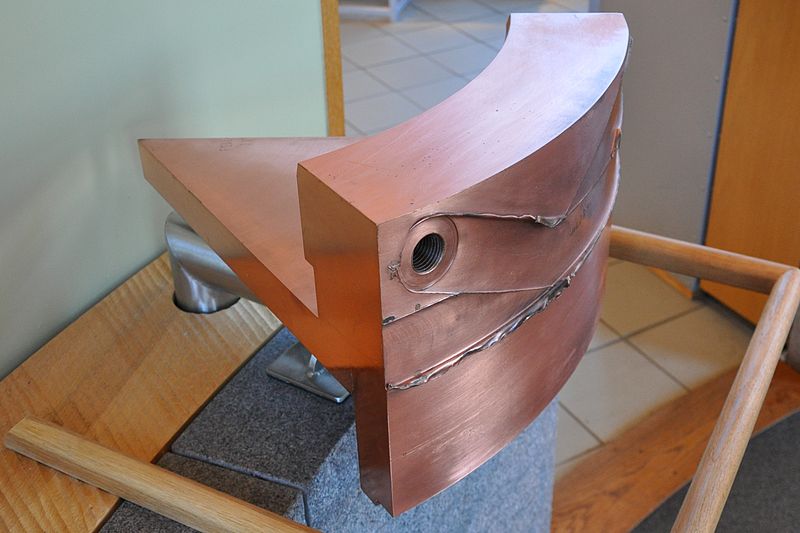Source: Wikipedia
Friction stir welding is a process of welding without having to melt the workpiece material. In traditional welding, heat is used to melt pieces of material together. Stick welding or shielded metal arc welding (SMAW), metal inert gas welding (MIG), and tungsten inert gas welding (TIG) are three main types of welding that incorporate the use of direct heat to melt and weld material together. Unlike traditional welds, friction stir welding generates heat through friction and without having to reach the melting point to weld or fuse the workpieces. Friction stir welding does not use filler wire or shielding gas to join workpieces together.
History
Friction stir welding was invented in 1991 by Wayne Thomas at The Welding Institute (TWI). His idea and goal were to overcome problems associated with traditional welding. He wanted to create a high-quality, consistent, light-weight solution; particularly, a solution aimed at welding difficult materials such as aluminum. Because of this, friction stir welding was born.
Operation and Process
You’re probably wondering how the machine generates enough heat to weld or how friction stir welding works. Similar to tools used and created by MegaStir, a rotating cylindrical tool with a profiled probe or pin is fed into the butt joint between two clamped workpieces. Generally, heat from the friction is generated when the rotating cylindrical tool and the probe or pin makes contact with the workpieces. This “stirring” of material uses frictional heat and allows the workpieces to soften without melting to fuse together. The tool will continue this process going forward at a pre-set welding speed. Friction stir welding comes in two known variants: friction stir processing and friction stir spot welding.
Applications
Friction stir welding and its variants are found to be used in a number of industrial applications. Because it offers a lightweight solution, friction stir welding has become the “go-to” innovative way of fabricating.
Aerospace is one of the industrial applications where friction stir welding is used. Vital in the aspect of weight, friction stir welding was used in making external tanks, cargo barrier beams, and floor panels in various types of aircraft to just name a few. United Launch Alliance, SpaceX, Airbus, and Boeing are only to mention a few companies that have used friction stir welding in creating their aircraft parts.
Friction stir welding is used in many other industries. These include the defense or arms industry, robotics, and computer industries. Friction stir welding is used in creating knives, industrial robots, and in joining computer parts. Apple began using the friction stir welding process in 2012, joining the iMac’s bottom to the back of its device.
Railways are another industrial sector that uses the friction stir welding process. Roof panels, side panels, floor panels, and new train bodies were made using the friction stir welding process, specifically, low-temperature friction stir welding in fabricating aluminum and aluminum alloys. Alstom, Kawasaki, Hitachi, and Bombardier are only a few companies who use the friction stir welding process to fabricate railway train parts.
Lincoln and Ford are other industries that use the friction stir welding process. Aluminum engine cradles and suspensions were made using the friction stir welding process for Lincoln’s Town Car. Ford used the friction stir welding process in creating their GT’s engine tunnel. Showa Denko created suspension struts and trunk lids for Mazda’s MX-5 using the friction stir welding process. The hood and rear doors of Mazda’s RX-8 used the friction stir welding process in creating these parts. Toyota also used the process in creating the boot lid for their Prius. Volvo and Audi are other automotive companies that use parts that were fabricated using the friction stir welding process.
Shipbuilding and offshore is another industrial application that friction stir welding is used. Fish freezer panels, deck panels, vessels, and rocket launch containers found in military ships are only to mention a few parts fabricated using the process. Mitsui Group, the United States Navy, and the Royal New Zealand Navy, are some of the notable entities that use the friction stir welding process in their vessels.
Whether used in applications in the air, land, or sea industries, friction stir welding has innovated the field of fabrication. The process is also used in creating some of today’s weapons, robotics, and computers.

Leave a Reply
You must be logged in to post a comment.